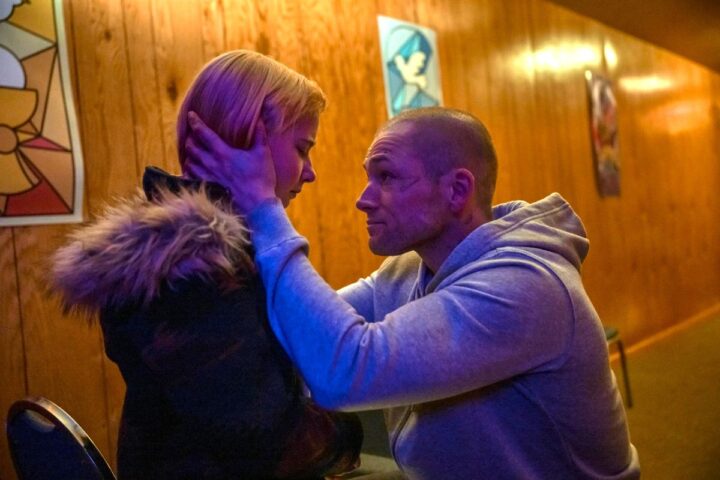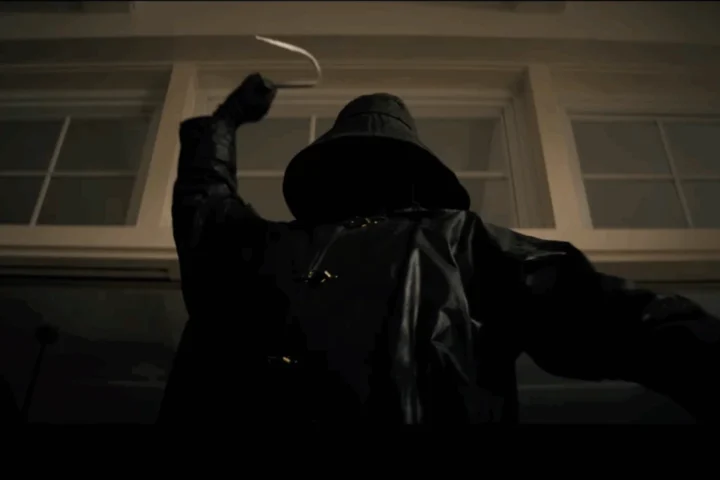There are two films competing in director Fede Alvarez’s Alien: Romulus—the first an impeccably designed technical nod to Ridley Scott’s 1979 Alien and James Cameron’s 1986 Aliens, recreated with meticulous reverence. But the second is a story that’s little more than a riff on those movies, acted by gravitas-lite young cast, and it’s a retread that wastes the film’s stunning design.
It’s been forty-six years since the release of Scott’s landmark piece of galactic monster poetry, a house-of-horrors suspense classic simultaneously introducing twenty-eight-year-old star Sigourney Weaver and H.R. Giger’s hideously inimitable killing machine creature. While Scott’s dream-like chiller launched Weaver’s film career, it also wedded its now legendary interstellar demon to our collective nightmares, so much so that even decades of lackluster sequels couldn’t diminish its singular menace. Until now. After seeing Alien: Romulus, it seems safe to say that the series no longer has the power to scare. While the movie, which plays like the greatest hits homage, offers a few tense moments, there are no new ideas and the thrill of its creatures is largely gone.
One idea that might have improved the picture would have been to bring back Sigourney Weaver in her signature role, but Alvarez instead opts for a younger, Gen-Z cast led by Cailee Spaeny (good in Priscilla, very good in Civil War) as one Rain Carradine (odd choice of last name), who plunges into the action heroics with the authority of, well, a 5”1’ actress, which is to say she is too petite and not physically convincing in arduous combat. It doesn’t help that she’s surrounded by a generic cast of unmemorable young actors who do little more than emote heavily on cue. Note to the cast—when appearing in a horror film, go ahead and scream, sure, but permission granted to also suggest intelligence.
Spaeny’s Rain drives a narrative that straddles the line between Ridley Scott’s atmospheric terror and James Cameron’s action-packed war picture, centered on a band of young laborers in a remote mining colony. Their world is a bleak, rain-soaked dystopia—imagine the neon gloom of Blade Runner—and it’s the only life they’ve ever known. Both of Rain’s parents have fallen victim to lung cancer, a grim consequence of their harsh environment. Trapped as expendable workers for the merciless Weyland-Yutani corporation, they’re little more than modern-day slave labor, exploited with no real hope of ever escaping the colony’s grip.
The gang is a motley crew featuring Rain’s old flame, Tyler (Archie Renaux), and his feisty sister, Kay (Isabela Merced). Then there’s Navarro (Aileen Wu), a pilot who meets with early trouble, and the underdeveloped Bjorn (Spike Fearn), whose function is anyone’s guess. Rounding out the team is Andy (David Jonsson), a “synthetic human” and Rain’s best companion of sorts, who gets some decently-written dialogue. His prime directive is to keep Rain safe at all costs—at least, until things inevitably go sideways.

A twist of fate presents itself when the crew learns of the Renaissance, a “decommissioned” and abandoned space station that feels uncannily like the doomed Nostromo. What better way to scavenge some much-needed supplies—and maybe even make their getaway—than by sneaking aboard and staking claim? But what secrets does this ghost ship conceal? For starters, the remains of android Ash, brought back to “life” by a bizarre CGI-recreation of Ian Holm—a clever nod to the 1979 original, though his excessive screen time makes it more of a quirky distraction than a tribute.
And that’s just the tip of the iceberg. The station itself is crawling with sinister pods, lurking facehuggers and, of course, the dreaded xenomorphs. This is what we came for, right? Kudos to Alvarez, who also co-wrote the screenplay, for relying mostly on practical creature effects, keeps the scares authentic and thankfully free from CGI trickery.
Anyone that’s seen the other pictures know what’s coming next, which is a Ten Little Indians style exercise in dispatching that will ultimately leave Rain as the final girl, left to do battle with the big, bad monsters while threats of self-destruction and escape pods loom. Been there, done that (several times). Credit where due, Alvarez mounts a nifty extended sequence in a zero gravity tube that is exploited for maximum thrills.
But overall, what Alien: Romulus leaves us with is a feeling that the series has run out of thrills. While Geiger’s creations are perhaps the scariest monsters ever put to film, they no longer hold much mystery or terror. And Alvarez seems to have little idea how his creatures might scare us—they hide, jump, spew acid blood as per usual and attack en masse a la Cameron, but strangely there isn’t a truly scary moment. Even a bizarre, climactic detour fails to ratchet much tension. Ands the actors, who appear about ten years too young for their roles and possess none of the substance of Weaver, Tom Skerritt, John Hurt, Veronica Cartwright and Yaphet Kotto (not to mention Michael Fassbender and Noomi Rapace) do little to engender empathy; they are merely interchangeable lambs to the slaughter.
Suddenly and by contrast with Alvarez’s fan service, Scott’s controversial and visionary 2012 Prometheus, which many fans criticized for not giving them straightforward xenomorph thrills, looks positively ambitious and statuesque by comparison.
Still, no one can say Alvarez hasn’t made a great looking picture, his large-scale sets and space milieu beautifully constructed. As tribute, the look and feel works while the story does not. The original picture’s tagline went down as an all-timer: “In space, no one can hear you scream.”
No one will hear any in the theaters playing Alien: Romulus either.
2 stars



